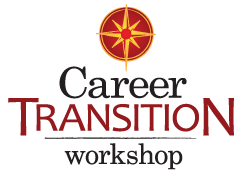Career Transition Workshop would like to share this article by Jacquelyn Smith and Skye Gould/Business Insider.
Having a ton of experience under your belt doesn’t necessarily mean you have an “impressive” resume.
“You can have all the experience in the world — but if your resume doesn’t stand out, if you don’t present that information in a well-organized manner, or if it doesn’t tell your story, nobody will take the time to look at your resume closely enough to see all that experience,” says Amanda Augustine, a career expert at TheLadders, an online job-matching service for professionals.
To get a clearer picture of what makes a resume stand out, we asked Augustine to create a sample of an excellent one for a mid-level professional.
While your resume may look different depending on the industry you’re in, the one below should serve as a useful guide for job seekers with about 10 years of experience:
What makes this an excellent resume for a mid-level professional? Augustine outlines the following reasons:
1. The job seeker didn’t try to squeeze everything into one page.
“At this point in your career, you’ve earned the extra resume real estate,” says Augustine. “Spend more space elaborating on your most recent work, assuming it’s most relevant to your current job goals.” Include your header at the top of the second page as well, she says, so your name and contact information are always “top of mind” for the reader.
2. A list of the job seeker’s core competencies is featured at the top.
Alex’s resume contains a list of his core skill sets, usually referred to as, “Areas of Expertise” or, “Core Competencies.” “This list serves two purposes,” she says. “One, it allows a reader to quickly scan the top portion of the resume and get a good sense of Alex’s capabilities; and two, it helps Alex’s resume get past the electronic gatekeepers known as Applicant Tracking Systems.”
3. Each role is split into responsibilities and key achievements.
Under each job title is a short description that explains Alex’s responsibilities in that particular role. “Underneath the description is a set of bullets that highlight his most noteworthy and relevant contributions,” Augustine explains. “Be specific and clear when describing your accomplishments and contributions.”
4. Information is quantified wherever possible.
Include numbers whenever possible, whether you’re describing the size of your budget, the number of events you helped organize, or the number of people you managed.
5. The job seeker used his work experience to show progression.
“Alex’s work experience is listed in reverse-chronological order, starting with his current position,” she points out. “More space is dedicated to the details of Alex’s recent roles and achievements, as employers are most interested in this information and it’s directly tied to his current job goals. Even when the job titles are the same, Alex is demonstrating how he’s progressed in his career by taking on larger projects, bigger budgets, and more people.”
6. The “Education” section was moved to the end of the resume.
Once you’ve been in the working world for three years, your education section should shift towards the bottom of your resume. “When you first graduate, your new degree is one of your best selling points,” Augustine says. “Now that you’ve been in the workforce for a while, your experience and the skills you’ve developed should take center stage.”

